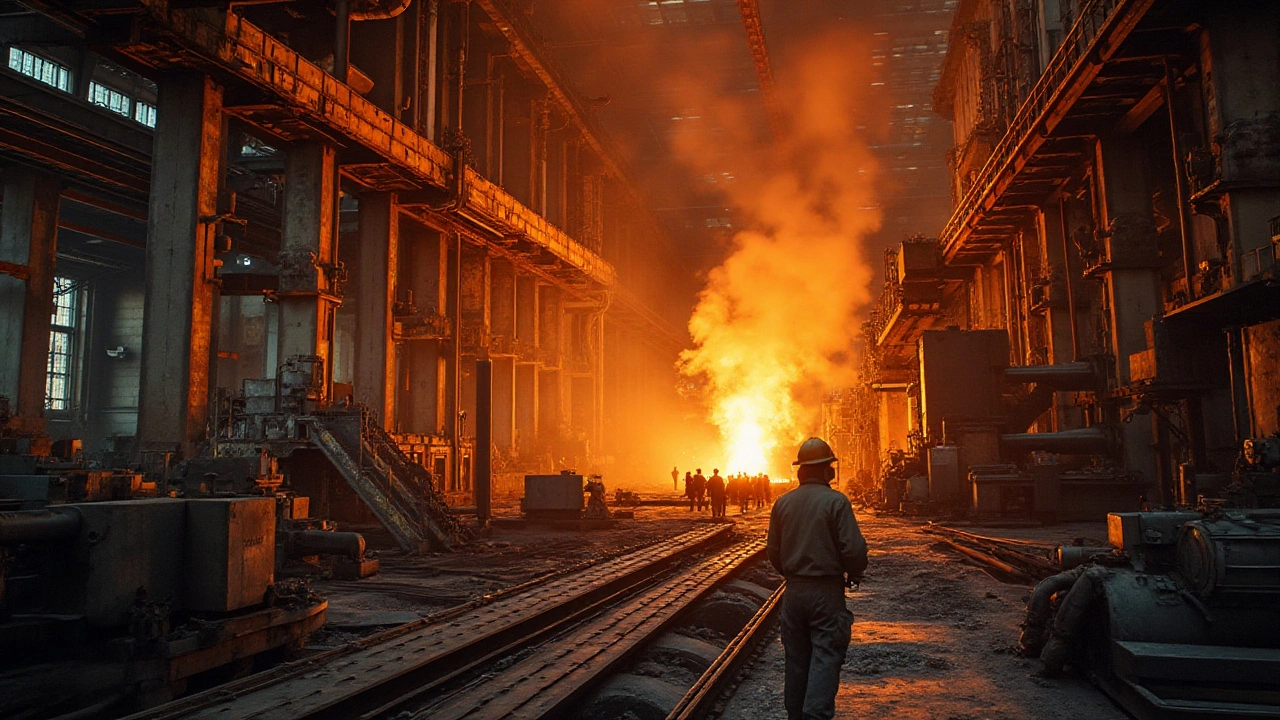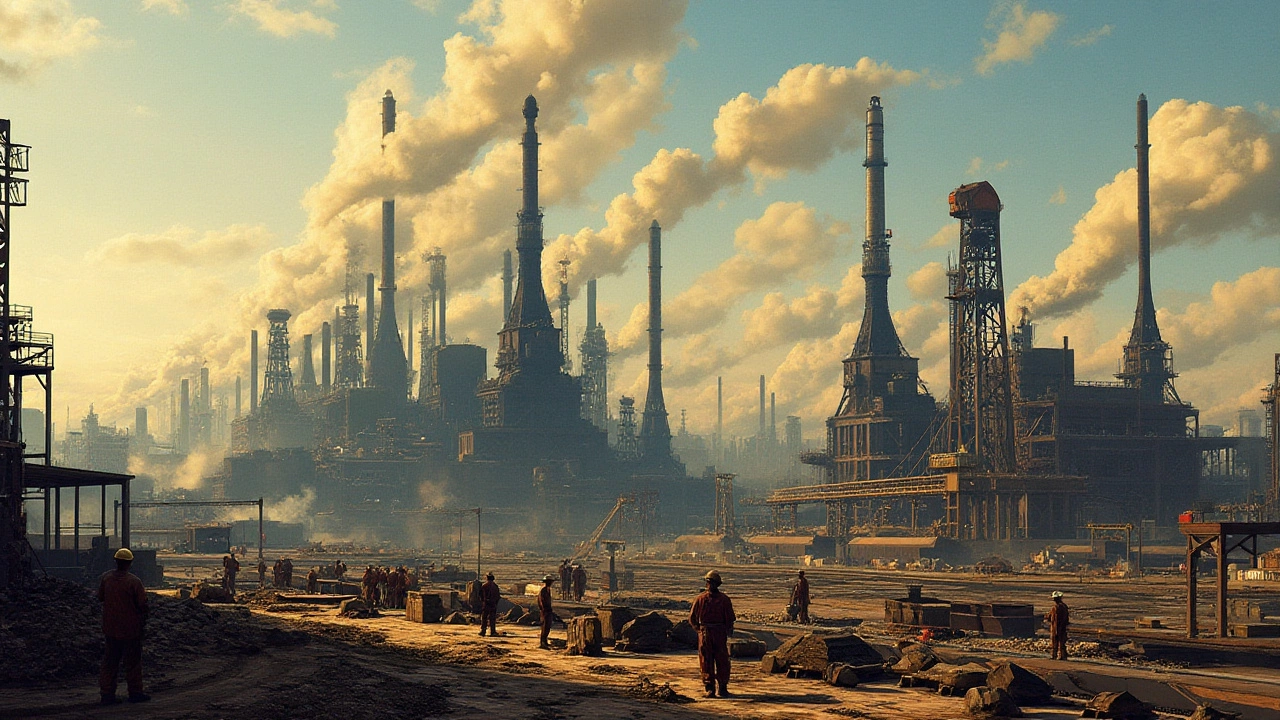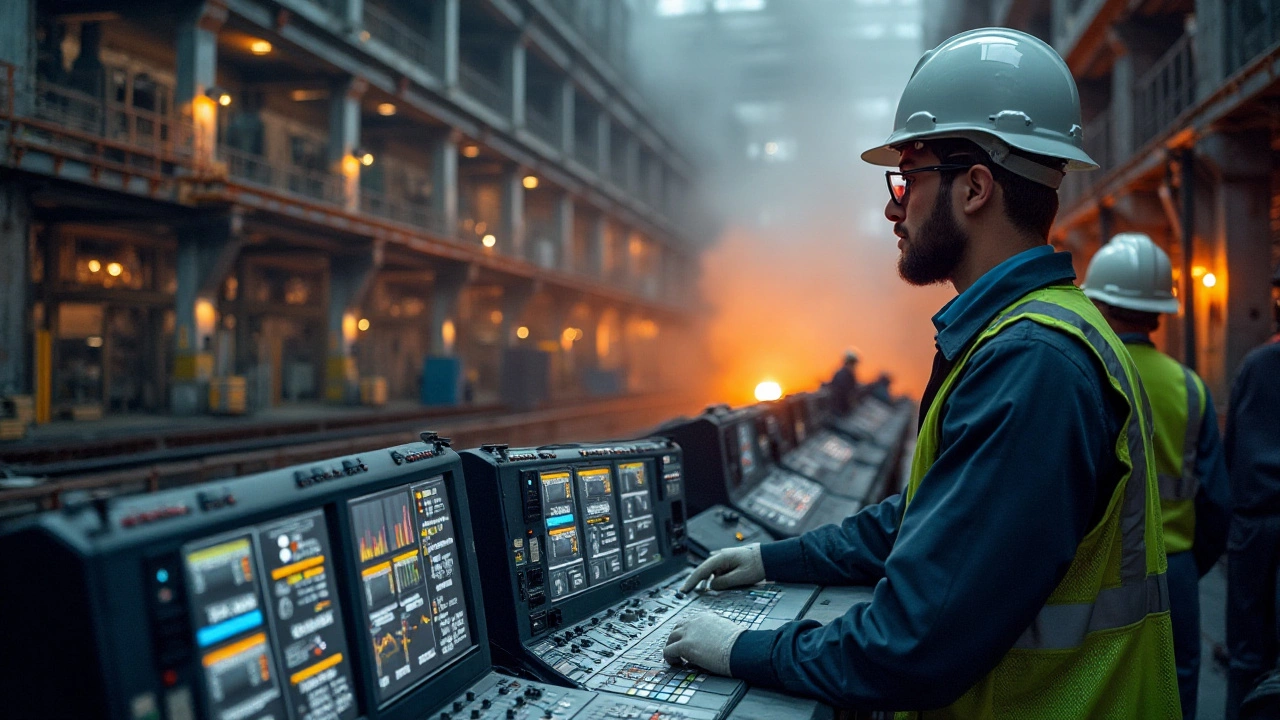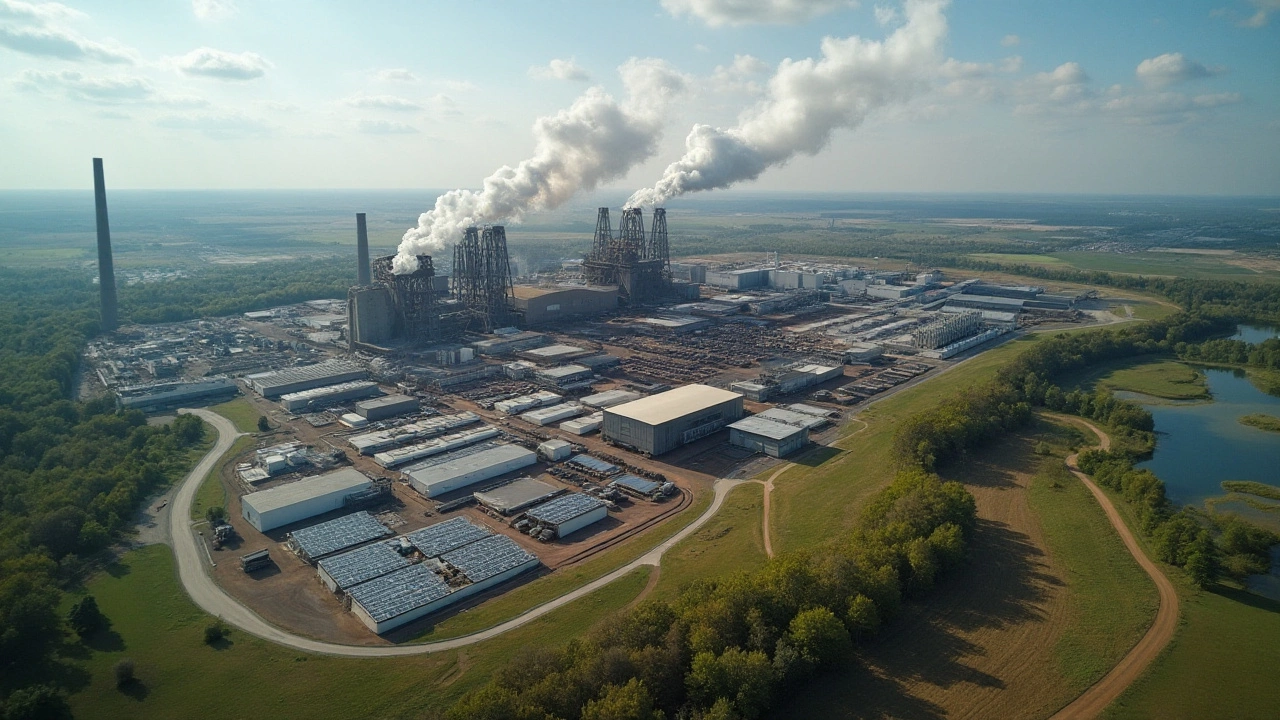
Steel manufacturing stands as a cornerstone of industrial competence and economic strength in the United States. It's an industry that has adapted and thrived through changing times and continues to be a giant in modern manufacturing.
Among the vast network of steel producers, one mill rises above the rest. This behemoth not only claims the title of the largest steel mill in the US but also plays an influential role in the global market. In this article, we explore this giant's journey, touching on its history, output capabilities, and its strategic impact.
As we delve further, you'll uncover the significance of this steel titan in driving economic growth and shaping infrastructure throughout the nation, while also understanding its place amidst fierce international competition.
- Overview of Steel Manufacturing in the US
- Profile of the Largest Steel Mill
- Production Techniques and Capacity
- Economic and Global Impact
Overview of Steel Manufacturing in the US
Steel manufacturing in the United States has a rich and transformative history that reflects the country's industrial evolution. It all began in the 19th century with the development of the Bessemer process, which allowed mass production of steel, thus revolutionizing construction and manufacturing. The US quickly became a powerhouse, as steel mills dotted the Great Lakes and beyond, making places like Pittsburgh synonymous with steel production. Over the decades, technological advances and economic shifts shaped the industry's landscape, with contemporary mills adopting cutting-edge techniques to increase production efficiency and environmental responsibility.
Today, US steel mills are a blend of legacy and innovation, continuing to meet both domestic and international demands. Despite the challenges posed by foreign competition, US mills have held their ground. They've achieved this through technological innovation and a focus on specialized steel products that cater to niche markets. Recycling has also become a pivotal part of steel manufacturing in the US, with mini-mills using electric arc furnaces to melt scrap steel into new, usable metal, thereby significantly reducing the industry's carbon footprint.
The role of steel mills in supporting economic growth cannot be understated. They not only provide raw materials critical for infrastructure development but also contribute significantly to employment and technological advancement. According to recent statistics, the US steel industry employs hundreds of thousands of workers, directly and indirectly. Such figures highlight the importance of these plants in maintaining a robust economy. As the demand for steel continues to grow globally, American steel producers find themselves focusing on both quality and sustainability to stay competitive in the global marketplace.
Despite their size and output capacities, it's not just about sheer volume for these mills. Modernization efforts over the past few decades have resulted in a more sophisticated approach to production, emphasizing the need for environmental compatibility and efficiency. As a result, emissions have been dramatically reduced while recycling rates have soared. A notable illustration of progress is Nucor, a leading player in the US, which operates as a recyclables-driven producer and prides itself on its minimal environmental impact.
The American Iron and Steel Institute highlights that "the steel industry remains critical to America's economic infrastructure, shaping the skyline with every beam."
Such insights provide a glimpse into why this sector remains indispensable in the context of national and global economies. As we continue to examine the largest steel mill in the US, it becomes evident how this industry intertwines with technological leaps, labor forces, and environmental stewardship to forge its path forward.

Profile of the Largest Steel Mill
When we speak about the titans of the steel industry, the largest steel mill in the US does not only dominate by sheer production volume but also by its innovative approach and rich history. Nestled in the industrial heartlands, this mammoth establishment is more than a factory; it is a testament to American industrial prowess. Here, a fusion of tradition and technology creates a symphony of steel production that few can rival. From the roar of the blast furnaces to the precision engineering at every step, this steel mill symbolizes resilience and ambition. At the helm, experienced hands guide operations to ensure this giant continues to lead, not just in America but on the global stage. This mill's influence ripples through supply chains, touching countless industries, from construction to the automotive sector. What most people might find intriguing is how seamlessly nature and industry coexist on its sprawling grounds, a balance that many consider a model for sustainable manufacturing.
To uncover the secret behind its supremacy, one need only look at its staggering capabilities. The mill boasts a production capacity that stretches into the tens of millions of tons annually, an achievement that places it firmly at the forefront of the US steel manufacturing hierarchy. Such massive output is backed by state-of-the-art facilities and an unwavering commitment to quality and safety standards. This emphasis on cutting-edge technology ensures efficient production cycles, and the dedication to reducing environmental impact signifies the mill's future-focused goals. Innovations like electric arc furnaces, which significantly lower carbon emissions, illustrate the transformative innovations that take place here. The mill's economic footprint is equally impressive, providing thousands of jobs and contributing significantly to local and national economies.
"Success in the steel industry relies not only on production volume but on the community we build within and the relationships we extend beyond our gates," remarked the mill's CEO during a recent industry summit.
"Our legacy is forged not just in steel, but in our continued commitment to innovation and sustainable practices," said another industry expert who has closely followed its progress over the years.This philosophy has fostered strong ties with stakeholders and collaborators, ensuring the mill not only grows but flourishes in an ever-evolving market. Community engagement initiatives and environmental conservation programs are just as prioritized as production, demonstrating a balanced approach to modern industrialism. Crucially, these endeavors enhance the mill's reputation, drawing skilled labor and partnerships worldwide.
Interestingly, the story of this dominant player is not solely one of present-day achievements but deeply rooted in a history that spans decades. Founded at the turn of the 20th century, its journey reflects the ebb and flow of the American industrial landscape. Years of relentless expansion and adaptation have witnessed the mill overcoming myriad challenges, from economic downturns to the rapidly changing technological paradigms. Such resilience is a hallmark of its identity, a driving force behind its steadfast position as not just the largest, but one of the most innovative in the steel realm. Sitting at the intersection of tradition and technology, it remains a beacon of hope and inspiration for an industry often seen as a relic of the past. For the uninitiated, learning about this mill's evolution provides a fascinating lens through which one can understand broader industrial trends and transformations.
The presence of global competition has not dulled its competitive edge but sharpened it. By embracing globalization, the mill has diversified its product offerings, extending its reach beyond domestic markets to international shores. This adaptability has not gone unnoticed by industry observers who often cite it as a blueprint for other facilities seeking longevity in a competitive market. That said, the stature of the largest steel producer in the US draws keen interest from stakeholders worldwide, all eager to learn from its successes and challenges. Enclosed within this dynamic environment are stories of determination, technological breakthroughs, and a relentless pursuit of excellence. Such is the legend of the biggest steel mill in the US, a living marvel that continues to script new chapters in its storied narrative.

Production Techniques and Capacity
The largest steel mill in the United States stands as a marvel of modern industry, fusing traditional methods with cutting-edge technology to meet the intense demands of the market. The mill utilizes a combination of blast furnace and electric arc furnace techniques, which allows it to process both raw materials like iron ore and recyclables such as scrap metal. This flexibility not only improves efficiency but also reduces waste, aligning with the growing emphasis on sustainability in industrial sectors. These methodologies contribute significantly to the mill's status as a top steel producer, enhancing its ability to maintain a constant and robust output.
In terms of capacity, this manufacturing giant is capable of producing several million tons of steel annually, securing its position as a leader in the industry. The strategic location of the mill near sources of raw materials and key transportation networks significantly aids in reducing logistical challenges. This geographic advantage ensures timely delivery of goods and maintains a steady flow between suppliers and consumers. Additionally, the mill's commitment to high-skilled labor and innovation enables the deployment of enhanced production systems to maximize output while maintaining quality standards.
An important insight from the American Iron and Steel Institute reveals that "innovation and efficiency do not come at the expense of quality. The mill continues to set benchmarks for sustainability and performance, continually striving to improve its production processes."Such emphasis on quality is reflected in the extensive range of products that emerge from this mill. From flat-rolled steel used in automotive applications to structural beams essential in the construction sector, the diversity in production showcases the mill's versatility and ability to adapt to market needs. This diversity not only strengthens the domestic market but also propels the mill into the arena of global competition.
Technology plays a pivotal role in the ongoing advancement of the mill's production techniques. Implementation of Industry 4.0 elements, such as IoT, big data analytics, and automation, contributes to more precise process control and predictive maintenance. This integration of technology ensures that any potential disruptions are quickly anticipated and addressed, minimizing downtime and enhancing productivity. The embrace of such advancements underlines the mill's commitment to maintaining its edge in the ever-evolving steel industry.
In conclusion, the success of the largest steel manufacturing operation in the US hinges on its astute blend of traditional and modern techniques, strategic geographical location, and a steadfast commitment to quality and innovation. By maintaining a robust production capacity, the mill continues to play a pivotal role in the US steel manufacturing landscape, setting a global standard for excellence and sustainability. This unique blend of capability and forward-thinking ensures it remains a cornerstone of the American industrial sector.

Economic and Global Impact
The largest steel mill in the US doesn't just lead in size; it also wields significant influence on both the domestic economy and the global stage. With vast production capabilities, this industrial giant feeds a range of sectors critical to the nation's infrastructure, from automotive to construction. Its operations bolster regional economies, creating jobs not only in manufacturing but across the supply chain, including transportation and retail sectors linked to the steel industry. This connectivity highlights its role as an economic pillar and growth driver within and beyond its immediate geographic location. US steel manufacturing isn't isolated by national borders. The largest mill often competes with international titans in the steel trade, exporting its products worldwide. It caters to markets in Europe, Asia, and South America, balancing import and export demands. This global outreach requires adapting to international standards and regulations, whether in environmental practices or quality assurances, which further underlines its impact on a worldwide scale. Amidst fluctuating global steel prices and tariffs, the mill has managed to sustain its competitive edge, showcasing resilience and adaptability.
From an economic perspective, the largest US steel mill contributes to Gross Domestic Product (GDP) on a massive scale. Each year, it churns out millions of tons of steel, directly influencing economic metrics. These contributions are reflected in national income accounts and regional development plans that rely heavily on industrial output. Its sheer production scale helps stabilize market prices, provides reliability to domestic industries, and ensures quality control that meets consumer demands. For many years, steel industry analysts have pointed to such manufacturing hubs not just as production sites but as economic stabilizers, essential for enduring financial health and societal development.
According to the World Steel Association, the US maintained a steady position as a major global producer, largely due to its advanced manufacturing plants.
The influence of the largest steel producer reaches environmental and technological facets as well. It has been at the forefront of advocating sustainable practices, investing heavily in technologies that reduce carbon emissions while maintaining efficient production lines. This commitment often sets industry standards, pushing others in the steel arena to follow suit. Such ecological foresight aligns with governmental and non-governmental efforts in reducing the industrial footprint, ensuring the steel industry evolves in step with global environmental goals. The future of steel hinges on these innovation-led practices, from reducing waste through circular economy principles to pioneering new forms of steel that revolutionize durability and application.
| Metric | Value |
|---|---|
| Annual Production (tons) | 20 million |
| Employees | 25,000 |
| Global Market Share | 7% |
Ultimately, the significance of the largest steel mill in the US extends beyond the borders of trade and economics. Its presence shapes the business landscapes and sets benchmarks in innovation and sustainability, affirming the steel industry's role as vital to America's industrial backbone.